
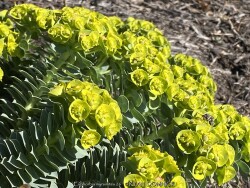

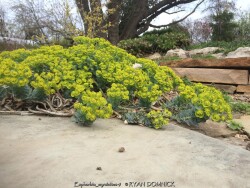
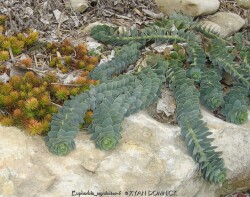
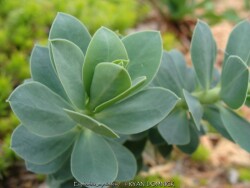
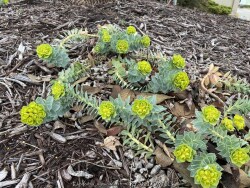

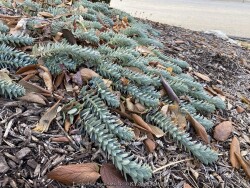

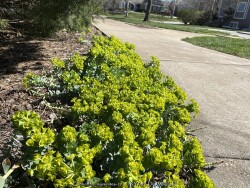

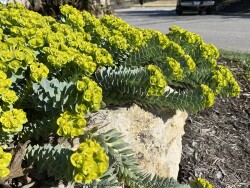
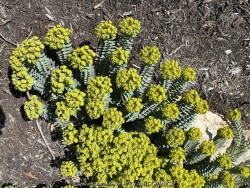
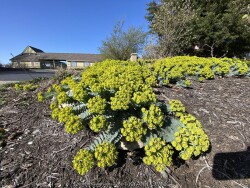
Plant Min Zone: 6a
Plant Max Zone: 8a
Sunlight: All Day Full Sun, Full Sun, Part Sun, Shade
Water / Rainfall: Low, Average
Soil Quality: Poor, Average
Bloom Season: Spring, Early Summer
Flower Color: Green, Chartreuse
Berry / Fruit Color: Silver-Grey
Spring Foliage Color: Silver-Grey
Summer Foliage Color: Silver-Grey
Fall Foliage Color: Silver-Grey
Evergreen Foliage: Yes
Winter Interest: Yes
Scented Flowers: No
Drought Tolerance: Medium, High
Wet-Feet Tolerance: Low
Humidity Tolerance: Low, Medium
Wind Tolerance: High
Poor Soil Tolerance: Rocky Soils, Shallow Soils, Sandy Soils, Alkaline Soils (high PH)
Height: 0.5' - 0.75'
Width: 1' - 2'
Growth Rate: Medium
Service Life: Medium: 3-5 years
Maintenance Need: Medium
Spreading Potential: High
Yearly Trimming Tips: Trim Evergreen Perennial Only if Winter-Kill Occurs.
Plant Grouping Size: Small Grouping of 3-5, Medium Grouping of 5-10, Mass Planting of 10 or more
Best Side of House: South Exposure, West Exposure, East Exposure, North Exposure
Extreme Planting Locations: Root-Bound Soils Under Tree, Survives Under Roof Overhang, Survives Severe Drought, Tolerates Extreme Heat, Resistant to Rabbits
Ornamental Features: Emerges Early in Spring, Long Lasting Fall Color, Bright Winter Color, Multiple Seasons of Interest, Exceptional / Colorful Foliage
Special Landscape Uses: Groundcover
Possible Pest Problems: Root Rot Disease
Plant Limitations: Unwanted Self-seeding, May be Poisonous, Needs Excellent Drainage, May Be Too Invasive for Garden Use
Shippable in 2026: YES
Donkeytail Spurge (Euphorbia myrsinites) is grown for its powder-blue/silver whorled foliage that is very architectural and symetrical. The stems creep along the ground in several directions from the main stem. Beautiful spring flowers are chartruse and foliage is solidly evergreen during winter and completely pest-free. Native to rocky and grassy places of southeastern Europe and Asia Minor, Donkeytail Spurge tolerates a wide range of growing conditions except excess moisture. Performance is best in poor soils, including rocky-sandy ones. Root rot can be a problem in poor drainage areas. It prefers full sun but can also grow well in full dry-shade. Individual plants tend to be short lived so allow some self seeding to occur within the group of plants. Due to self-seeding, it is considered a noxious weed in several western states and should not be planted in those areas. However, it is not a problem in Eastern Kansas or further East areas with over 35 inches of rainfall per year. Do not plant in rich moist soils or root rot will probably occur. Donkeytail Spurge is less adapted to consistent summer heat and humidity of zone 7b Southeast parts of the United States. With poisonous foliage, these plants resist deer and rabbit browsing. Wear gloves when handling this plant and avoid the milky sap. Great plant for berms or clammoring over retaining walls in hot West or South exposures in full sun or the opposite full dry-shade!